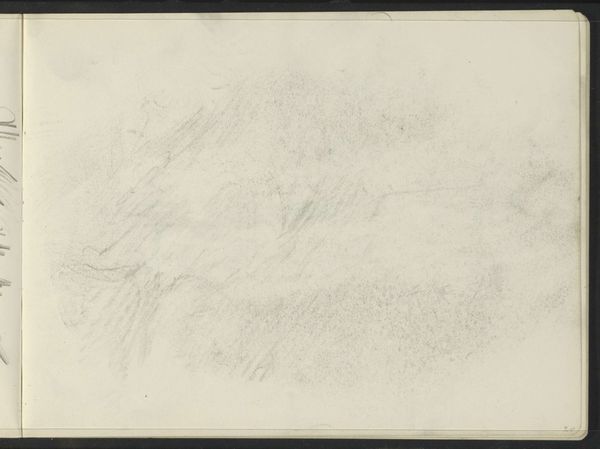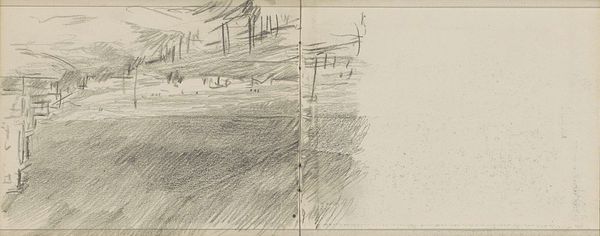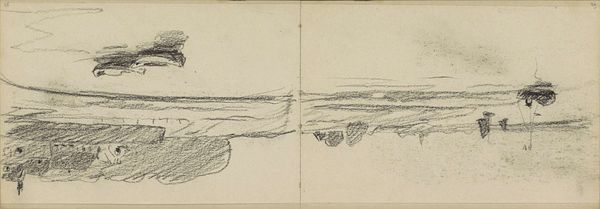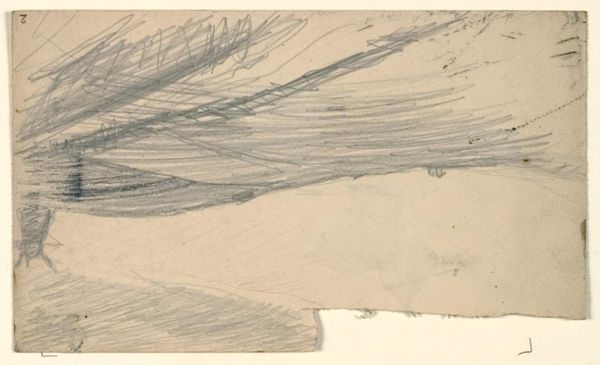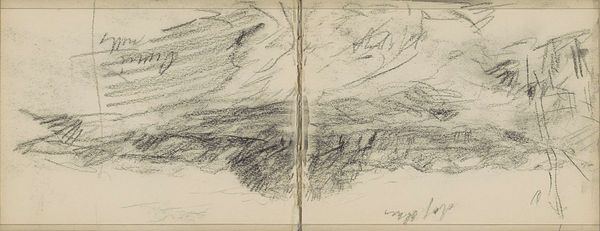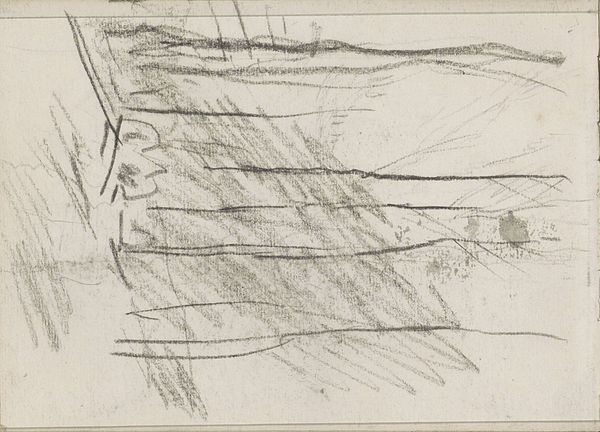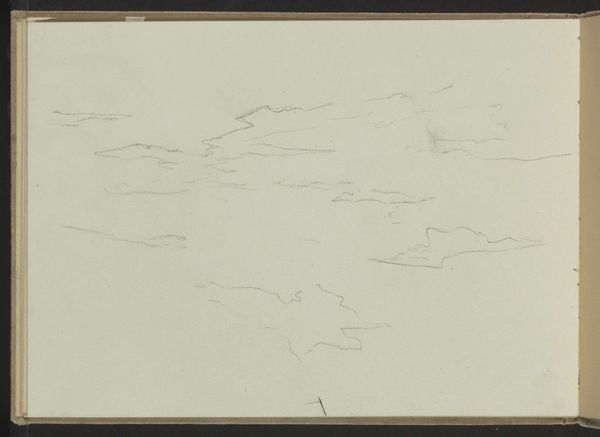
drawing, pencil
#
drawing
#
landscape
#
pencil
#
realism
Copyright: Rijks Museum: Open Domain
Curator: Looking at this sketch by Louis Apol, titled "Landschap met een wolkenlucht," or "Landscape with a Cloudy Sky," made around 1880, currently residing at the Rijksmuseum. I'm immediately struck by the economy of means; the pencil on paper manages to evoke a rather impressive sense of scale and atmosphere. Editor: There's a brooding quality to it, wouldn’t you say? A heavy sky pressing down, rendered so effectively by these seemingly hurried, almost violent pencil strokes. One wonders about the socio-political climate reflected in this oppressive atmosphere, and also in the economic constraints faced by a working-class artist such as Louis Apol. Curator: Violent, perhaps, is strong, but I agree there's an intensity, though not one of anguish but close observation. This artist wasn’t recording an emotional state; he was simply looking, finding how to translate light and texture. The very materiality of pencil lends itself to this—its capacity for gradations, for the subtle burnishing of the paper. It’s a working-class medium if any material can embody a social class—direct, humble, and infinitely versatile through skilled labor. Editor: Precisely, the labor involved shouldn't be glossed over. Look at the repetitive strokes, the deliberate application of pressure to achieve different tones, there's toil here and yet it culminates in something almost ethereal. That tension itself speaks volumes about the lived realities of many artists during that time—balancing societal expectation to portray certain picturesque ideals with often scarce access to the more “acceptable” high art medium of oils and brushes and all other instruments, of high societal aesthetic. Curator: Absolutely. And even within that seeming restriction—pencil, paper—we see mastery of the medium and that makes this sketch feel complete and considered. This artwork is testament that material limitations don't dictate the message, but provide a framework within which creative labor elevates. Editor: Indeed. The sketch urges us to interrogate how social conditions can paradoxically foster creative innovations. Curator: Precisely—leaving us pondering on the simple sketch as an outcome of socioeconomic complexities and artistic expression! Editor: A fitting conclusion on the relationship between social class and artwork indeed, something to ponder.
Comments
No comments
Be the first to comment and join the conversation on the ultimate creative platform.

